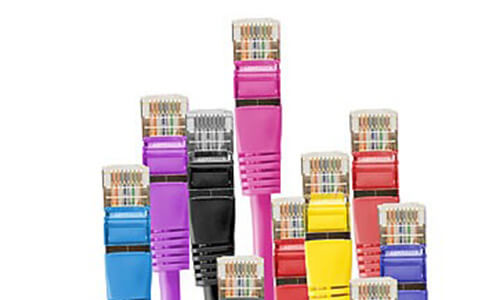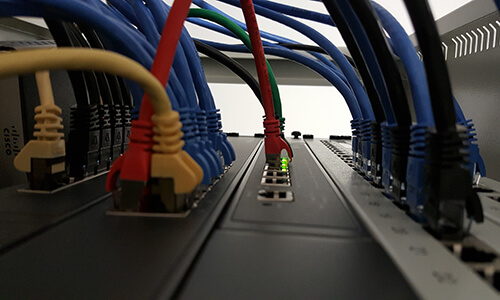A Detailed Explanation of RJ45 Interfaces
In the realm of wired network connections, the RJ45 interface is an indispensable component. As a standard 8-position modular interface, it serves as the primary bridge for data transmission between various network devices. This article will delve into the details of RJ45 interfaces, covering their definition, structural composition, classification, working principles, application scenarios, and advantages.
Definition of RJ45 Interface
RJ45, short for “Registered Jack 45,” is a widely used connector in Ethernet. It links devices like computers and switches via twisted-pair cables. Its standardized design ensures compatibility across different equipment and cables.
Definition of RJ45 Interface
It consists of a plug and a socket (module):
- The plug made of plastic, has 8 gold-plated pins corresponding to the 8 wires in twisted-pair cables. Gold plating enhances conductivity and resists oxidation.
- The socket integrated into devices or walls, contains 8 contact points matching the plug’s pins, ensuring a secure connection.
Its design follows strict specs, with precise pin dimensions and spacing for reliable fitting.
Classification
- Commercial RJ45 interfaces: Suitable for offices and homes, tolerating stable temperatures with low dust and vibration resistance needs.
- Industrial RJ45 interfaces: Built for harsh environments, with rugged enclosures (e.g., IP67 rating) to resist dust, water, and extreme temperatures, used in factories and outdoors.
Working Principles
It transmits data by converting electrical signals: Signals from devices pass through the plug’s pins to twisted-pair cables, whose twisted structure reduces electromagnetic interference and crosstalk. The socket at the receiving end converts signals back for device processing.
Wiring Standards
- T568A: Wire order (left to right): green-white, green, orange-white, blue, blue-white, orange, brown-white, brown.
- T568B: Wire order (left to right): orange-white, orange, green-white, blue, blue-white, green, brown-white, brown.
T568B is more common in commercial networks (Data reference: “Ethernet Wiring Standards” by Fluke Networks, https://www.fluke.com/en-us/learn/blog/cabling/ethernet-wiring).
Applications & Advantages
Used in office/home networks, data centers, surveillance systems, and industrial automation. It offers high compatibility, reliable transmission, easy installation, and cost-effectiveness, making it ideal for large-scale deployment.




